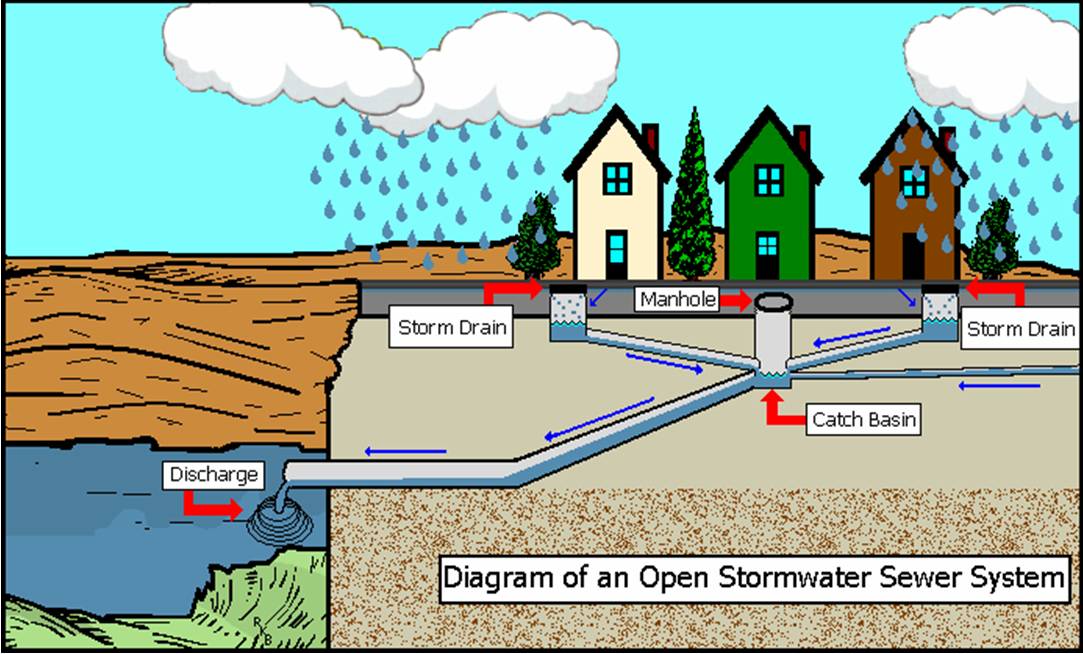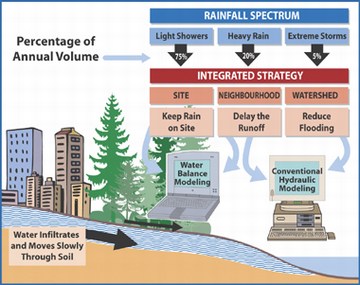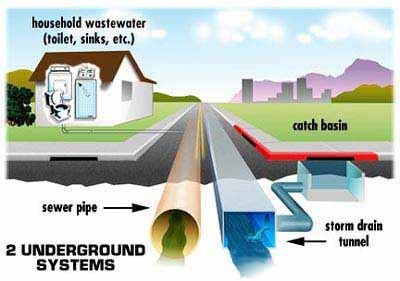

Storm Water Management
There is increasing recognition that stormwater management needs to be undertaken in a safer and more ecologically sustainable manner. Stormwater should be regarded as an asset and a resource to be valued, rather than considering it as a nuisance to be disposed of as quickly as possible.
A different approach to the urban storm water management has involved:
- The establishment of a storage-oriented approach for controlling runoff quantity from urban areas;
- The identification of the environmental values (or beneficial uses) of particular water bodies which are to be protected;
- The establishment of water quality management strategies;
- The development and implementation of monitoring and surveillance programs to ensure that runoff quantity and water quality (or environmental) objectives are being maintained.
Some examples of integrated measures which can be adopted include:
- Integrated land use planning to achieve multiple uses for urban land,
- Capture and storage of roof runoff in order to reduce demands on the potable water supply,
- Retaining of storm water runoff in ponds for use in non-potable water supply,
- Use of infiltration facilities to reduce direct storm runoff and increase flows in rivers.
The objectives of stormwater management are:
- To provide safety for the public,
- To minimize and control nuisance flooding and to provide for the safe passage of less frequent flood events,
- To stabilize the landforms and control erosion,
- To protect property,
- To enhance the urban landscape,
- To optimize the land available for urbanization, and
- To minimize the environmental impact of urban runoff on water quality
These objectives could be achieved when:
- The planning, design and construction of new stormwater drainage facilities is adequate to service the requirements of new and future developments.
- There is compatibility with existing storm water facilities, operational methods, and maintenance techniques
- Stormwater facilities provide adequate environmental, community, and asset protection consistent with acceptable planning, design, and construction requirements and the principles of ecologically sustainable development
Planning and development of Sewage water Development (SWD) system must be guided by a coordinated approach associated with:
- Catchment-based planning and management
- Integrated urban land use planning.
- Infrastructure provision and management practices which reflect social, economic, and environmental values
Stormwater management practices need to be consistent with the objectives of Ecologically Sustainable Development (ESD), which aim to achieve sustainable usage of the nation’s water resources by protecting and enhancing their quality while maintaining economic and social development. Stormwater management practices need to be based on ecologically sustainable development principles and should be integrated with total water cycle management
5 Responses to “Storm Water Management”
Leave a Reply









 LIKE TO GET UPDATES
LIKE TO GET UPDATES  TO GET EXPERT GUIDE
TO GET EXPERT GUIDE
Interesting pictures & diagrams about Stormwater, they sure make things easier to understand. Thanks for sharing!
-Jackie
Interesting pictures & diagrams about Storm water T. Systems, Needs More picture.
– can you EM treatment informations?
Thanks for sharing!
Howard.
Hello Mr.Howard
We will provide later in our site for Effective Microorganisms (EM) for reducing volumes of sewage sludge in the waste Water Treatment.
This post is awesome and valuable information in it. This helps me to clear my doubts. Thanks.
The graphics you’ve used in the post make it more interesting and easy to understand. I’m glad I came here.